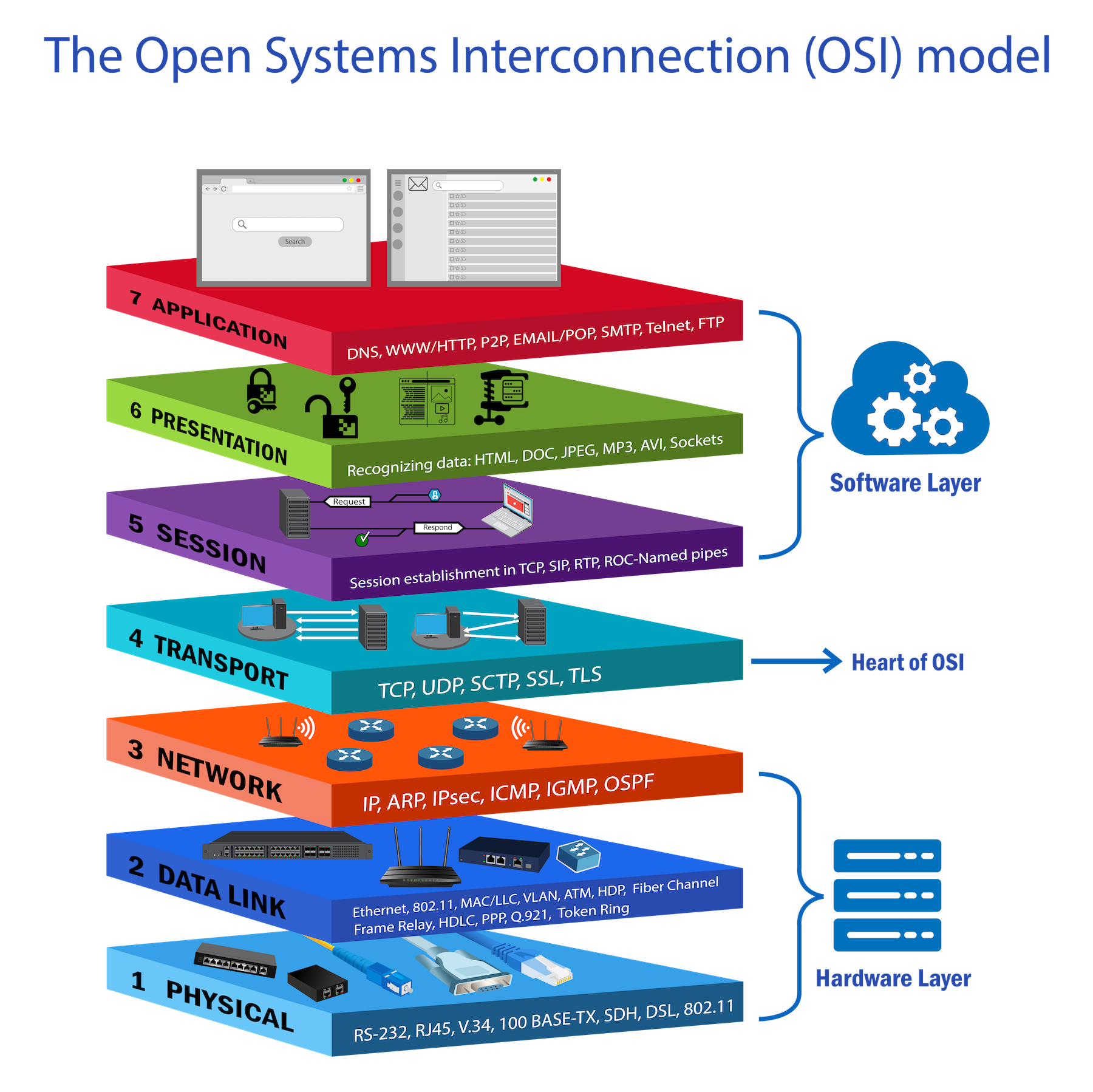The Open Systems Interconnection (OSI) model is a seven-layer framework developed by the ISO to standardize and explain how data travels through a network. These layers each have distinct roles, from physical transmission to end-user application communication, ensuring data is reliably transmitted and understood.

The physical layer handles the hardware that transmits raw bits of data. It includes cables, switches, and the actual medium for transmitting electrical, optical, or radio signals. The physical layer ensures that these signals are properly transmitted and received.
This layer is responsible for framing raw bits into data frames and ensuring error-free data transmission between two devices on the same network. It’s divided into two sublayers:
The network layer manages routing, logical addressing (IP addresses), and packet forwarding between different networks. Routers operate at this layer, using IP addresses to determine the most efficient data route.
The transport layer provides end-to-end data delivery between hosts. Key protocols are:
This layer establishes, manages, and terminates communication sessions. It ensures that sessions are maintained and synchronized, allowing different applications to exchange data efficiently.
The presentation layer is responsible for translating data formats, encryption, and compression. It ensures data is in a format that both the sending and receiving systems understand.
The topmost layer interfaces with end-user applications (e.g., web browsers, email clients). It handles protocols that support file transfers, email, and other network services.
The OSI model is a conceptual guide rather than a strict framework followed by all network protocols. Real-world protocols, like TCP/IP, often combine or bypass certain layers for efficiency, particularly the physical and data link layers.
The OSI model is essential for designing, troubleshooting, and maintaining networks. Each layer’s specialized tasks streamline network communication, making it easier for administrators, developers, and students to understand how data flows within a network.
By breaking down complex network interactions into manageable layers, the OSI model provides a universal framework that aids in creating and maintaining efficient networks.
Explore more about how Data General can help optimize your network infrastructure by visiting our gateways and for any queries, feel free to contact us!